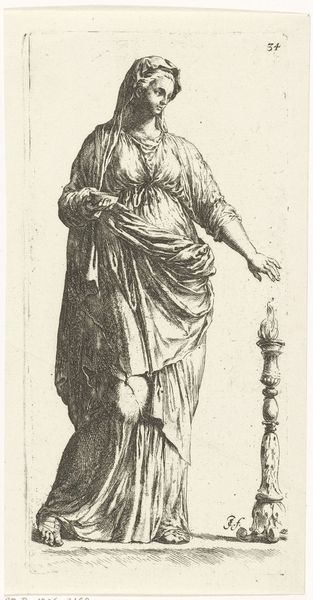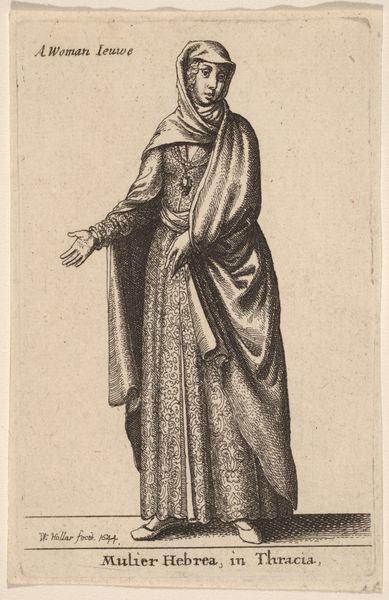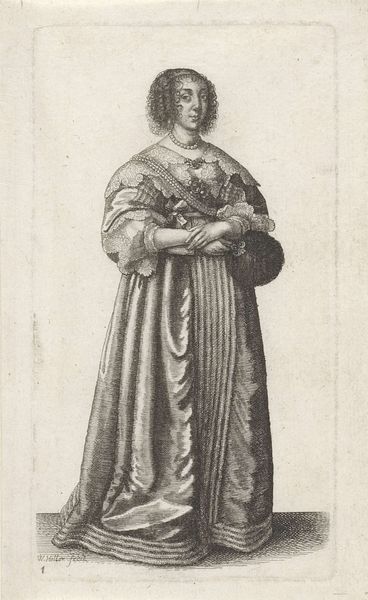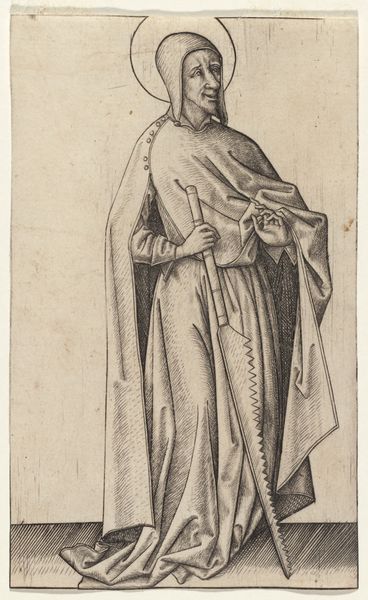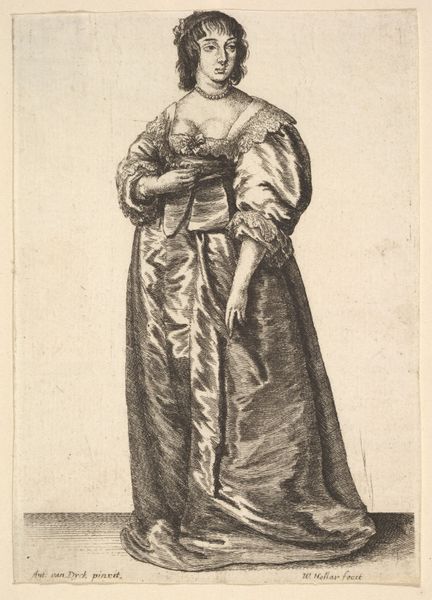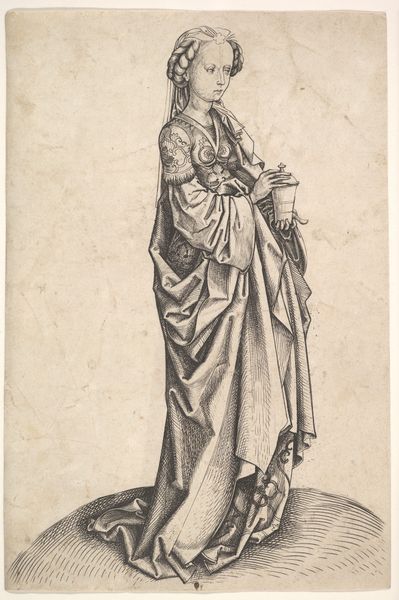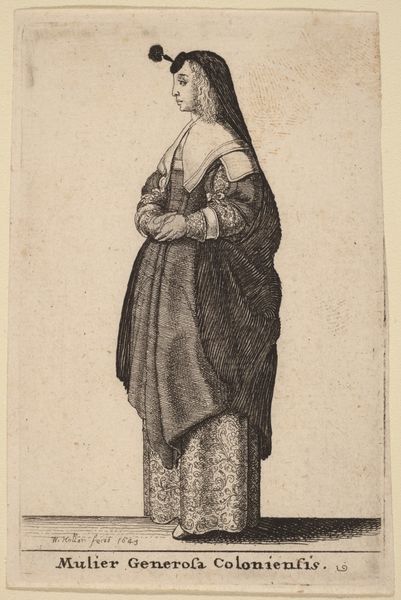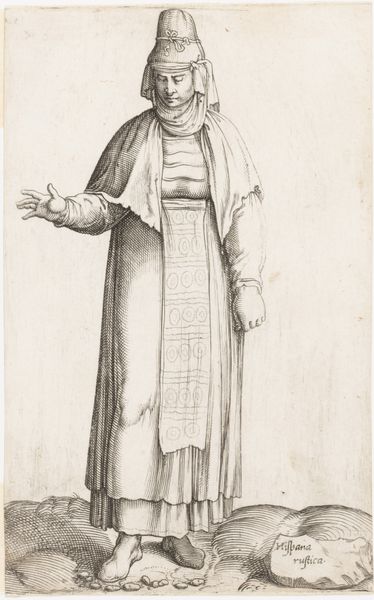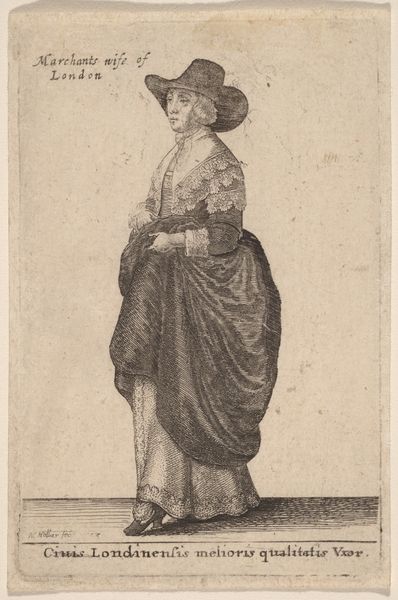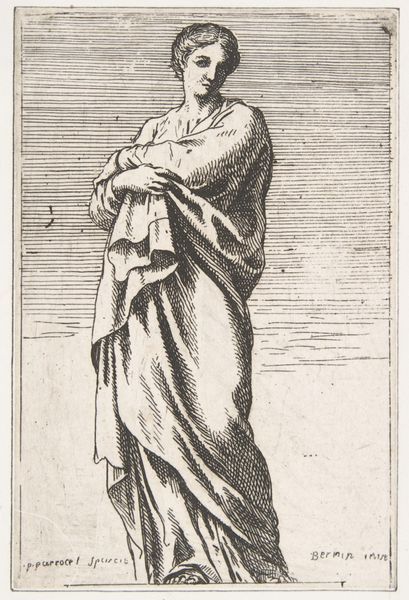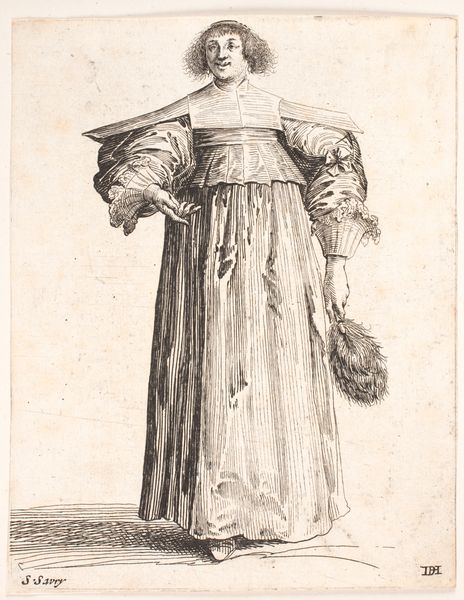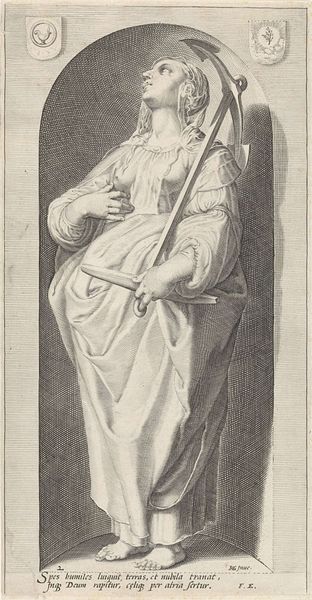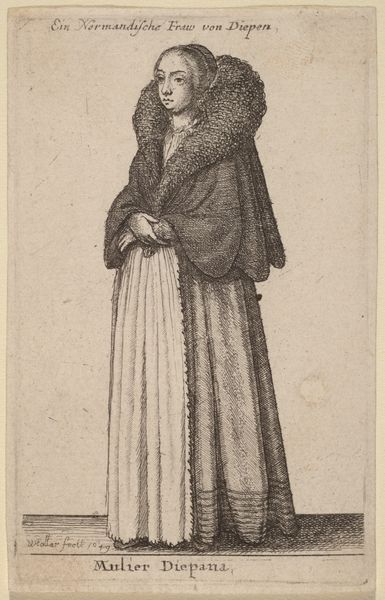
print, engraving
#
portrait
#
baroque
# print
#
old engraving style
#
figuration
#
genre-painting
#
dress
#
engraving
Dimensions: height 141 mm, width 78 mm
Copyright: Rijks Museum: Open Domain
Curator: This is Wenceslaus Hollar's "Woman with a Houpette," dating from 1627 to 1636. It's an engraving. Editor: It has a somewhat reserved feeling about it, doesn’t it? She stands in quiet contemplation, her hands gently clasped. It’s stark, yet refined in detail. I find that the dress pattern makes the portrait vivid, yet somehow she holds herself as still. Curator: Hollar was a prolific printmaker, known for capturing contemporary life. These prints, widely distributed, really offer us a fascinating look into 17th-century fashion and society. Editor: Absolutely! Her dress… it’s everything! That houpette, for starters – a striking vertical accent! You can see just how precise the engraving is; every little fold and textile pattern has been lovingly created. Curator: Exactly, prints like these played a crucial role in disseminating fashion trends. It’s less about capturing the essence of an individual and more about showcasing the era's stylistic ideals and how social identity was constructed. Editor: I can imagine ladies passing this print around, each vying to see who would copy that beautiful lace trimming or how they wear their hair next time. Was there a Vogue in the 1600s? If not, there should have been! It’s hard to imagine today how essential prints would be in disseminating the latest ideas. Curator: Indeed. Hollar capitalized on that thirst for information, especially in an age before mass media as we know it. Editor: It is interesting how much emphasis he placed on the social value of dressing in that era. Looking at how closely women's clothes represent them. There's a whole narrative encoded in her outfit that would be fun for any historian to analyze further, don’t you think? Curator: It's certainly a rich source of historical data, providing glimpses into the intricate web of social structures and representational conventions. It all boils down to understanding our cultural evolution through artistic representation, as I see it. Editor: Exactly, which just highlights what prints, even simple portraits, mean to us now! They speak about past lives. Thanks for drawing my attention to it.
Comments
No comments
Be the first to comment and join the conversation on the ultimate creative platform.
